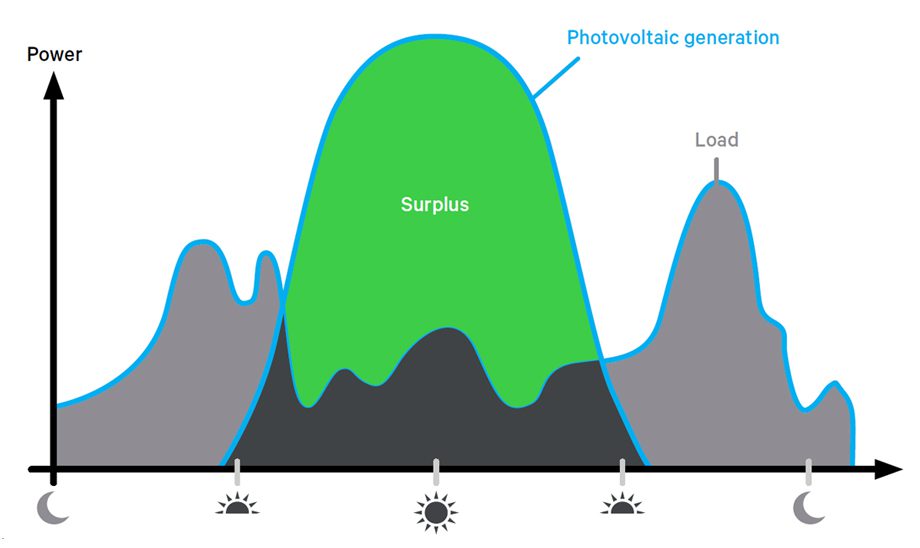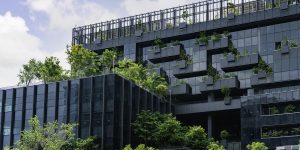Today’s commercial facilities require increased control of power reliability, sustainability, and costs. Driving factors include more frequent severe weather power outages and carbon emission concerns. In addition, data from the U.S. Energy Information Administration shows that both residential and nonresidential electricity rates increased ~25 percent between January 2020 and March 2024.
These factors and more are driving the deployment of on-site and renewable energy sources and are changing how stakeholders manage them. According to the International Energy Agency, renewable energy capacity in the United States, grew from 86.6 gigawatts in 2016 to 156.6 gigawatts in 2022, an increase of more than 80 percent.
City districts, educational campuses, military bases, hospitals, commercial buildings, factories, and even homes are becoming prosumers that consume, produce, and control energy. New, widely available technologies such as photovoltaic solar cells and battery energy storage systems (BESSs) can improve overall energy costs. A new generation of smart products enables prosumers to select power sources in response to changes in energy pricing and peak loads.
From a facility perspective, stored energy can be leveraged not only as an energy source during power outages, but can help offset high electricity rates and manage power availability fluctuations. Such a strategy avoids penalties during peak power consumption while increasing power resilience and clean energy consumption. For instance, high Time of Use (TOU) utility rates can underscore the need to offset high energy costs. When utility rates are high, a facility can access power that was stored when rates were low. From a utility perspective, energy storage via a BESS installed on a power grid enables quick responses to peaks in energy demand.
Temporal patterns for loads, generation, and storage
Over a typical 24-hour period, buildings consume electricity at variable rates. Organizations and people generally decrease their activities at night. Power demand accelerates during morning hours. Early and mid-afternoon, power demand slows until evening when people go home and generate a high residential load. One example of this pattern is shown in the figure below.

While these power consumption patterns fluctuate, a solar array is inactive at night and begins to generate power at dawn, peaking later when demand may be relatively low. This is where BESSs come in. Since renewable power generation is often temporally misaligned with power demand, a BESS becomes a repository for that surplus power. The surplus can then be used on site:
- During periods of high utility charges or TOU rates
- To enable backup power source during a utility outage
- To participate in a peak demand response or peak shave program
Using stored surplus power during periods of high public demand and high utility rates empowers facilities to time-shift the availability of economical power to match their consumption patterns.
Isolation plays a critical role
Given their advantages, managing inverter-controlled power sources and stored power is not as straightforward as it seems. A common perception is that a BESS can be used to supply backup power. While true, many power users do not realize that a BESS can only supply backup power if it and its essential loads are isolated from the utility grid. Without the proper isolation, a BESS can back-feed power to the grid, which poses a safety threat to personnel and can overload and damage BESS inverters and batteries.
Every facility that has used a BESS as a backup power source has required a custom, multi-device, isolation solution…until now. Recently, Underwriters Laboratories issued its provisional UL 3008 guidance that defines requirements for source isolation switches. ASCO Power Technologies is the first manufacturer to offer one. Designed to meet UL 3008 requirements, its SourcePacT™ Source Isolation Switch provides engineers, contractors, and facilities with a single-device solution that streamlines design, deployment, and use of inverter-controlled backup power. Adding this one switch to a BESS-equipped power system enables facilities to increase resilience, optimize energy costs, and enhance sustainability. It’s a simple addition that can maximize the value of every BESS dollar.
To learn more about managing temporal power availability, isolating power sources, and using a BESS for backup power, please download the new ASCO white paper entitled SourcePacT Source Isolation Switch Basics. For further information, visit the SourcePacT webpage, email ASCO Customer Care, or contact a local ASCO representative.



Add a comment